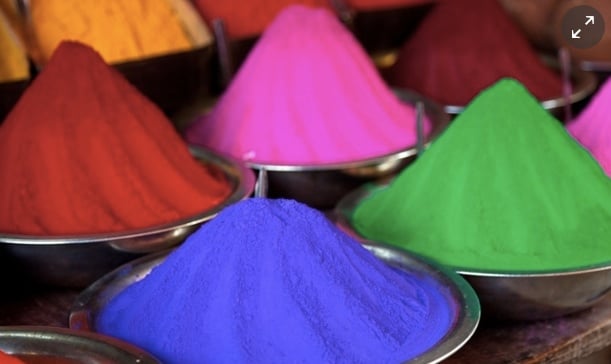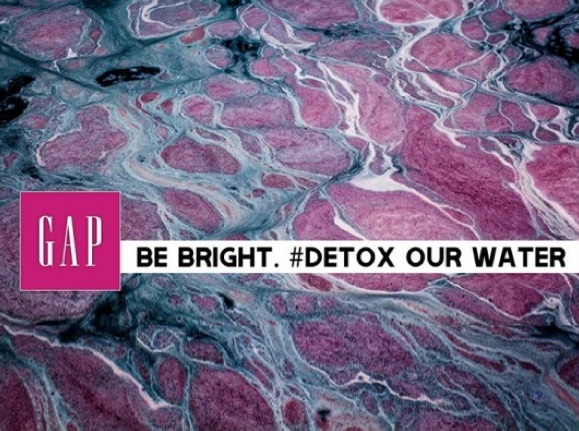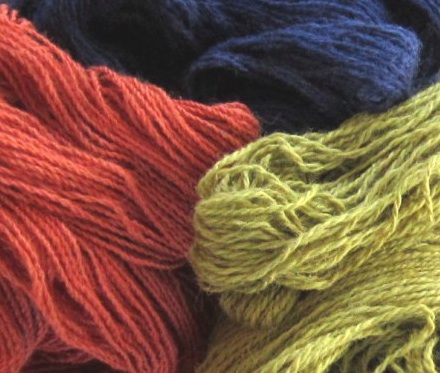Botanical Colors founder Kathy Hattori recently commented on an article titled “Mordant Madness!” on Buxton, Maine based Lana Plantae responding to a discussion about a person posting on a “social media page devoted to fiber arts,” that they were “attacked” by natural dyers at a fiber event because their wool was colored with synthetic vs. using natural dyes.
Lana Plantae founder Marcia Macdonald writes: “I do suspect the word “attack” may be a little strong and used for dramatic effect. Immediately there was a long string of commentary and it was very anti- natural dye, anti-mordant and overwhelmingly these comments were made by people that had, in fact, never actually dyed anything naturally. This is not the first time I have seen something like this happen.”
While MacDoanld gives a helpful 101 on the subject of natural dyes and mordanting, what seems even more interesting have been the comments at the bottom of her post.
Hattori tells me, “The point is to develop synthetic dyes so that they don’t pollute and find robust natural dyes from the vast amount of agricultural and manufacturing food waste that we produce. The innovation must happen at both levels because we have a serious problem with toxic synthetic dye manufacturing that pollutes land and water, and agricultural bio-waste could be mined for additional benefits like color, medicine, oils and green chemicals before being composted or incinerated.”
(From the Guardian’s recent article, “Natural Dyes vs. Synthetic, Which is More Sustainable?”
“I think we are screaming about the trees because we can’t see the forest. The real issue is not whether natural dyes are toxic but what is the environmental impact of the synthetic dye industry? We don’t see it because we get our dyes in little tidy jars and packages and love the easy, brilliant colors, but if you look at where the dyes are being manufactured, there is a very different picture that shows the devastating results of synthetic dye production,” says Hattori.
In 2012, the Blacksmith Institute in partnership with the UN targeted synthetic dye manufacture as one of the top 10 global polluters. The impact of poorly regulated dye manufacturing puts over 1 million people at risk with chemicals being discharged into the environment including chromium, lead and cadmium.
According to the Blacksmith Institute, other harmful chemicals that are involved in dye manufacture include sulfur, nitrates, chlorine compounds, arsenic, mercury, nickel and cobalt (where all those brilliant beautiful shades are made from).
Moreover, if you trace the feedstock used to make synthetic dyes (hint: it’s a petroleum by-product), you gain insight in exactly where these dyes originate and what their impact is.
“It is a vastly different and more toxic story than the source for natural dyes,” says Hattori.
“Of course, there are extremely conscientious dye manufacturers who don’t pollute and if you use synthetic dyes, you should purchase from them whenever possible, but if we are to be informed about dyes, we need to start asking questions rather than going for hysteria. Synthetic dyes are a huge environmental and global health problem precisely because of their ubiquity. It is important to understand that 100% of the industrial environmental remediation that is happening today is because of the toxicity and persistence of synthetic dyes and chemicals,” adds Hattori.
While natural dyers have the luxury of knowing exactly what is in the colors they create, they can choose to work with local fibers and dyes, or draw from historical dyestuffs from other parts of the world. Globally, natural dyes are produced by cooperatives, small farmers and family businesses. Many of the dyestuffs come from agricultural or food processing waste, diverting materials from the landfill or water treatment plants.
“I think the growing movement to reconnect using natural dyes comes from the appealing concept that not only can we gather and use dyestuffs in our local ecosystems but that we can impact economic development and build community with natural fibers, cultivated dyestuffs and small scale processing. It’s a level of self sufficiency that empowers us rather than keeps us captive to global textile production,” says Hattori.
Images: Lana Plantae, Greenpeace




